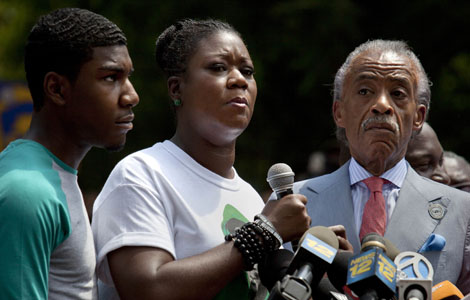Giving ancient Lhasa a facelift
Updated: 2013-07-23 08:52
By Wang Huazhong and Da Qiong (China Daily)
|
||||||||
Conserving heritage
Wu Yingjie, deputy Party chief of the Tibet autonomous region, asked local authorities and builders to "take people's living conditions as the top priority, and to make the protection of the culture and heritage one of the most important tasks" during the project.
The goal was "to help the old district of Lhasa spark vitality and dynamism against the backdrop of a new era", he said.
According to the project administrators, the design department conducted surveys about the old buildings and asked Tibetan architects for their guidance so the area could be "rebuilt as it originally was".
At a news conference, officials said, "The renovation rigorously abides by Tibetan culture in the choice of construction materials, range of colors and style."
"We tried to save the original facades of the buildings as much as possible," said Tsedar, deputy head of the restoration project. "We didn't make major changes if minor alternations could meet the demand. We avoided using replacement elements and moving objects around."
Structural engineer Liu Yu said before-and-after blueprints have been kept for each of the 172 buildings with unique and spectacular elements.
The Lhasa government has also invested 300 million yuan on nine major cultural protection projects, including an upgrade of the firefighting system in Jokhang Temple and the restoration of frescos and the statues of the Four Heavenly Kings in Ramoche Temple.
Family members taught Asong, from Gonggar county in Lhokha, to make clay figurines and he has practiced the art for 22 years. He joined the project and led apprentices on a six-month project to rebuild the Four Heavenly Kings.
"Only two other temples house statues of equivalent size to the Shakyamuni in Lhasa. One is Jokhang and the other is Ramoche Temple. I'm very honored to have the opportunity to restore statues at temples with centuries of history."
He said the Four Heavenly Kings are the biggest statues in Lhasa: "Our restoration will make the statues last for a long time regardless of the cost," adding that the Four Heavenly Kings have a human look and so allow the artists license to use their imaginations.
"Despite the requirement that we should follow the body scale of the deities strictly in accordance with descriptions, we can illustrate their characters in different ways," he said. "We give the same deity different looks. That's the amazing thing about clay."
Erik Ziarczyk, a Belgian journalist who toured the old district, said he liked it very much. "I want to walk around more to see the little stores and I also want to have dinner there in one of those little restaurants," he said. "It's all very interesting."
Palden Nyima contributed to this story.
Most Viewed
Editor's Picks

|

|

|

|

|

|
Today's Top News
Quake in NW China kills 89, injures 700
US blacks, whites split on Zimmerman verdict: poll
Kissinger and Jiang see bright future for relations
China sees no major forex withdrawal: regulator
Business holds up for Minmetals arm
Beijing knife attack leaves one dead
Kate gives birth to a baby boy
ROK-DPRK industrial park talks end
US Weekly

|

|














